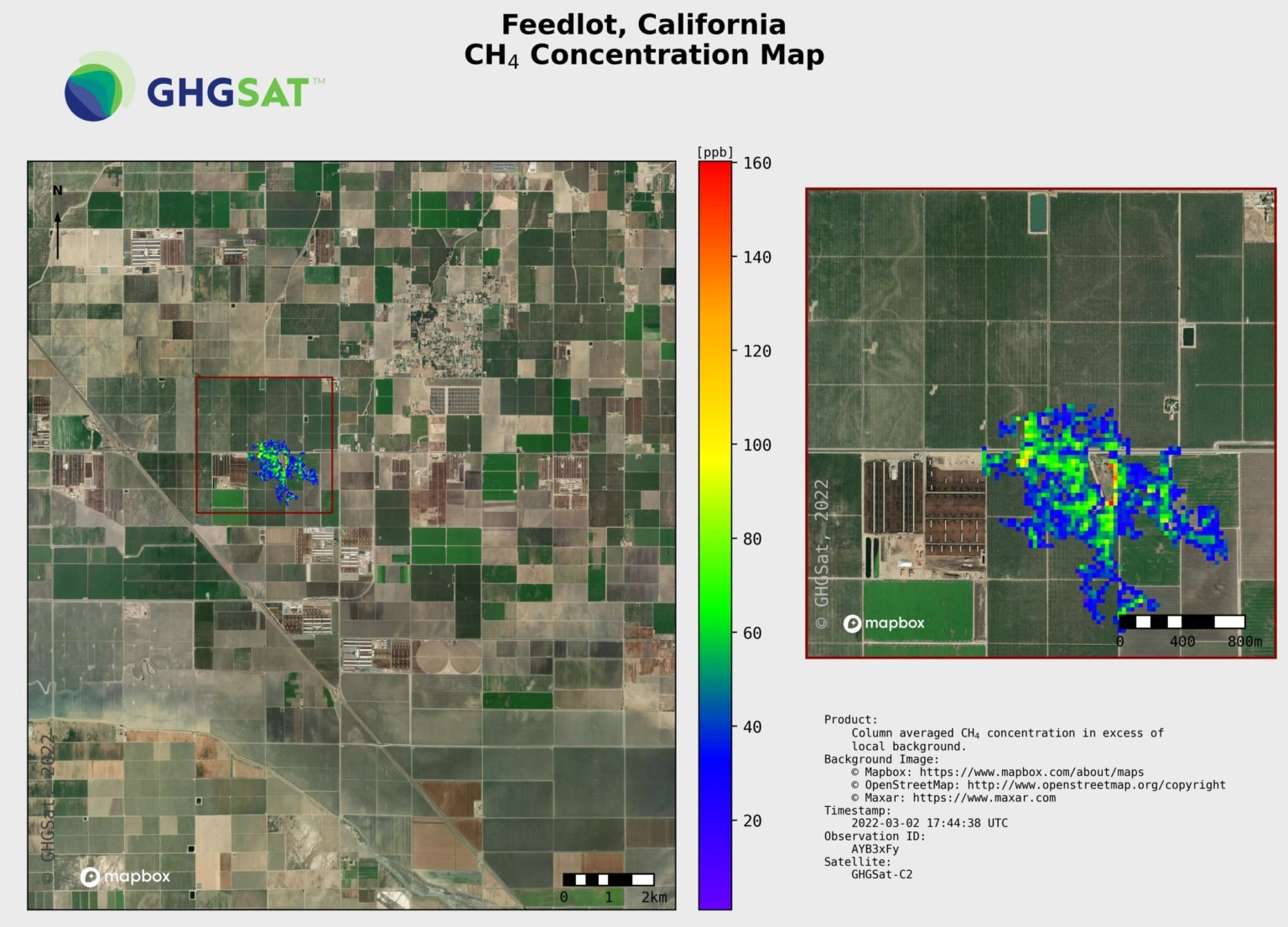Methane emissions from cow burps spotted from space for the first time
Findings could help farmers monitor impact of herds on climate change, Thomas Kingsley reports


Methane emissions burped by cows have been observed from space for the first time. They were detected by Canadian environmental data company GHG Sat using high-resolution satellites which specialise in monitoring emissions from space. It is hoped that the technology could help farmers cut methane emissions in future.
In February, the company detected methane emissions coming from an agricultural area in California’s San Joaquin Valley, and further analysis confirmed the source of the pollution as a cattle feedlot.
The satellites recorded five emissions, says GHG Sat and found that if they were sustained for just one year, enough gas would be released “to power 15,402 homes,” the company said.
The company believes it marks the first time greenhouse gas emissions from cattle have been measured from space, thanks to advances in technologies. Methane emissions from cattle have been identified as a significant contributor to climate change. As cows digest their food, they release methane, mostly through their gassy burps.

But the methane they release is a powerful greenhouse gas that traps heat in the atmosphere. Animal agriculture as a whole is a major source of greenhouse gas emissions, with cattle farming alone thought to be responsible for around 3.7 per cent of all global emissions.
Brody Wight, from GHG Sat, said they were surprised by what they saw. “It demonstrates a completely new capability from space,” he said. “What’s unique about us is we can really get to the source” of emissions, homing in on specific feedlots. Scientists are trying to develop ways to help cattle digest food without producing methane. And satellite imagery could be a way of auditing their efforts.
GHG Sat has three high-resolution satellites in orbit, which it has previously used to measure emissions from open-pit coal mines. Each satellite is just the size of a microwave and flies over a designated location for around 20 seconds taking a quick “snapshot” of emissions.
The Montreal-based company believes its technology could also be used to help farmers measure the climate impact of their herds, and experiment with new diets for the cows to curb their flatulence. At the moment obtaining accurate emissions figures for cows is costly and complex.
Join our commenting forum
Join thought-provoking conversations, follow other Independent readers and see their replies
Comments
Bookmark popover
Removed from bookmarks